Stem Cell Therapy for Diabetes in India
Are you still craving for that one piece of chocolate cake in the fridge? Are you tired of all the routine checkups and pricking yourself repeatedly for a blood test? Are you still finding it an economic burden to take medicines year after year?
You can now say goodbye to this hasty life!
Enjoy your daughter’s birthday party cake with her by getting yourself treated for diabetes using Stem cell therapy in India.
Stem cell therapy provides a one-stop cost-effective solution for diabetes providing long-term therapeutic benefits.
Let’s understand how it works.
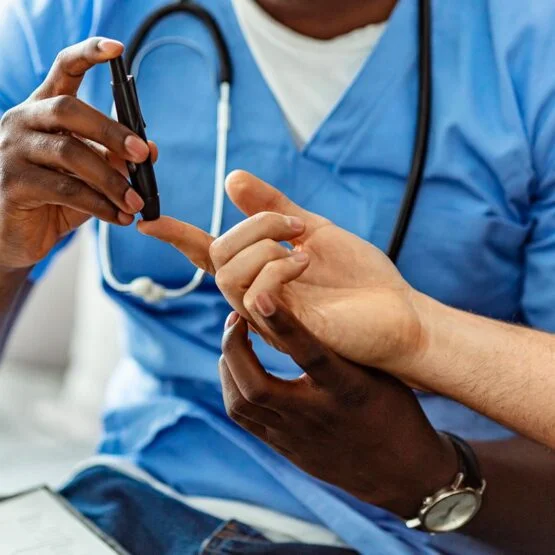
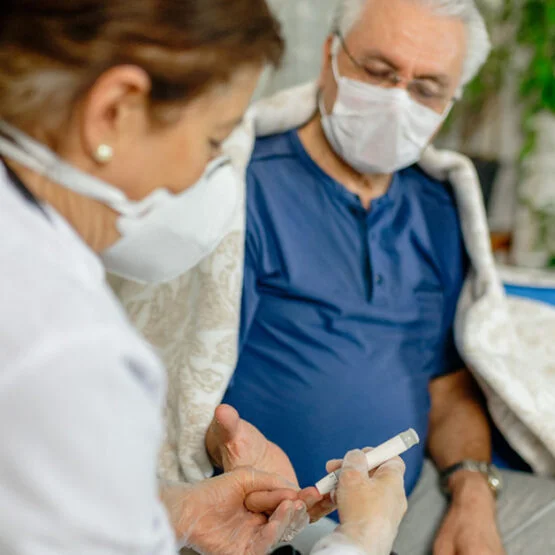
Diabetes is a silent killer and if left untreated can lead to serious complications. According to WHO, about 422 million people worldwide have diabetes, and the majority of these people live in low-and middle-income countries.
Moreover, diabetes directly contributes to 1.6 million deaths each year, making it one of the leading causes of death globally. The biggest reason for worry is that the prevalence of diabetes has increased steadily over the past few decades.
It is very important to control diabetes to live a healthy and longer life. Diabetes untreated properly can lead to other complications such as heart disease, blindness, kidney disease, nerve damage, Alzheimer’s disease, depression, and erectile dysfunction.
The unfortunate part of diabetes is that the patient has to live constantly on medications with a compromised lifestyle, including a sex life. However, few smart patients are able to reverse their diabetes.
What is Diabetes?
Diabetes mellitus which is also known as diabetes is a disease that occurs when your blood sugar levels, which is also called, blood glucose are too high. This rise in your blood sugar level over time can lead to serious damage to the heart, blood vessels, eyes, kidneys, and nerves.
Glucose is the main source of energy in your body which comes from the food that you eat.
Insulin is a hormone made by the pancreas (a gland in the body) that helps glucose and sugars get into your cells which can be used for energy production.
When your pancreas doesn’t produce enough insulin or when your body cannot use insulin effectively this can ultimately lead to the accumulation of the sugar in the bloodstream causing diabetes.
Let’s now understand what are the types of diabetes in detail.
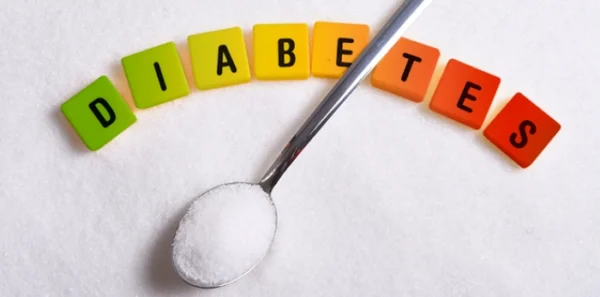
What are the different types of Diabetes?
The most common types of diabetes are Type 1, Type 2, and gestational diabetes. Type 2 diabetes is the most common among them followed by Type 1 diabetes. Let’s check the different types:
The pancreas cannot produce enough insulin because the body’s immune system has attacked those cells in the pancreas responsible for its production.
Insulin is taken daily to keep blood sugar levels under control in people suffering from type 1 diabetes. The disease generally appears during childhood.
In Type 2 diabetes, the pancreas makes less insulin and your body has become resistant to it. It mainly occurs when your body can’t use insulin properly.
Roughly 90 percent of people with diabetes have type 2 diabetes.
Gestational diabetes is a type of diabetes that is diagnosed for the first time in an individual during pregnancy or gestation.
It affects the way your cells use sugar. It is a type of diabetes characterized by high glucose levels, which can easily become a problem for both you and your baby’s good health during pregnancy.
Generally, this type of diabetes goes after the delivery, but there is a possibility that a few people might develop type 2 diabetes later in life.
There exist some other types of diabetes such as:
- Maturity onset diabetes of the young (MODY): It is monogenic diabetes that is mild and asymptomatic in nature. It is most commonly seen in non-obese children, youngsters, and adults.
- Neonatal diabetes: It is a rare form of diabetes that happens within the first 6 months of life.
- Wolfram Syndrome: It is a type of diabetes that is passed down from various generations in a family which causes insulin-dependent diabetes since childhood with worsening vision damage.
- Alström Syndrome: It is a condition that involves progressive loss of vision and hearing ability, type 2 diabetes, obesity, and weakening of the heart.
- Latent Autoimmune Diabetes in Adults (LADA): It is a condition that begins in childhood when your body starts attacking its own insulin-producing cells. This condition begins in childhood and may not require insulin externally for controlling the sugar levels for the first 6 months after getting diagnosed.
What causes Diabetes?
Each type of diabetes has a different set of causes:
When the immune system attacks and destroys insulin-producing beta cells in the pancreas, the natural insulin-production capability of the body ends. And hence external insulin is to be provided to the body.
At times, genes also play a role in some people.
Further, sometimes viral infections trigger immune system attacks.
Type 2 diabetes is a combination of genetics and lifestyle factors. Obesity or being overweight increases your risk. Extra weight, especially around the midsection, makes your cells more resistant to insulin’s effects on blood sugar.
This is a genetic condition that runs in families. Family members have genes that increase their chances of developing type 2 diabetes and being overweight.
Gestational diabetes is a condition that develops as a result of hormonal changes that occur during pregnancy. The placenta secretes hormones that make a pregnant woman’s cells more resistant to insulin’s effects. During pregnancy, this can lead to high blood sugar levels.
Pregnant women who are overweight or gain too much weight during pregnancy are more likely to develop gestational diabetes.
Let’s understand the different signs and symptoms that diabetes causes.
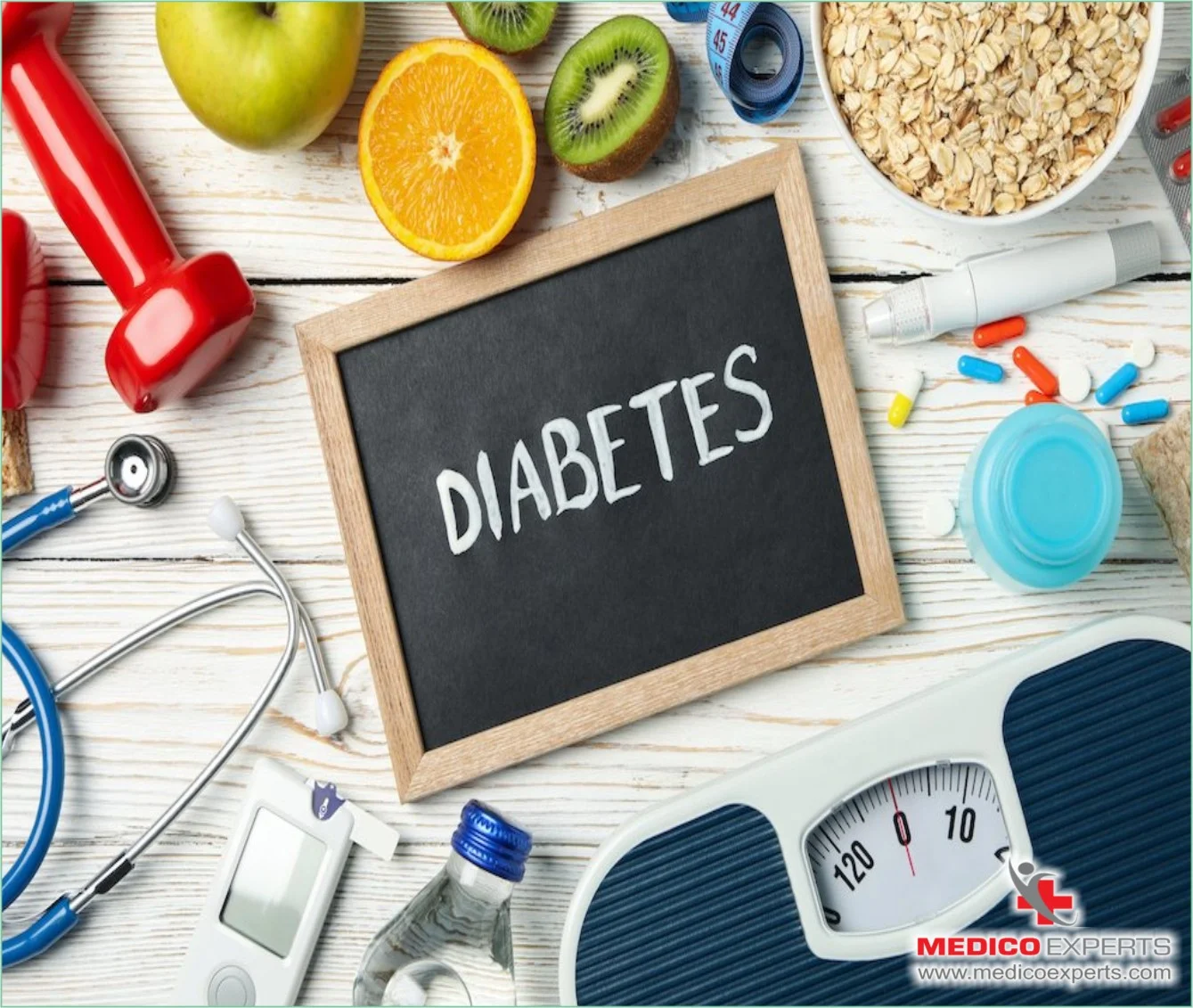
What are the symptoms of diabetes?
The most common symptoms of diabetes are:
- Increase in the frequency of urination
- Being very thirsty
- Feeling more tired than usual
- Looking thinner or losing weight
- Genital itching
- Cuts and wounds take longer time to heal than usual
- Blurred vision
- Increased hunger
Additional symptoms that can be seen are:
- Symptoms in men:
Men with diabetes have decreased sex drive, erectile dysfunction (ED), and poor muscle strength.
- Symptoms in women:
Women with diabetes have urinary tract infections, yeast infections, and dry, itchy skin.
What are the risk factors for Diabetes?
The risk factors for diabetes can vary depending on its type. Hence, the risk factors are explained in detail below:
This can involve a family history of diabetes wherein having a parent or sibling with type 1 diabetes.
You can get type 1 diabetes at any age but it usually develops from the childhood.
This can include the following factors:
- Being overweight
- Age 45 years or more
- Physically inactive lifestyle
- Non-alcoholic fatty liver disease
- History of gestational diabetes
You are prone to get gestational diabetes if you are under the following risk factors:
- Gestational diabetes during a previous pregnancy
- Overweight
- Age more than 25 years
- Family history of type 2 diabetes
- Hormone disorder called Polycystic Ovary Syndrome (PCOS)
What are the tests for diagnosing Diabetes?
For diagnosing diabetes you need to get your blood sugar level tested to identify and differentiate between the different types of diabetes. Following is the list of examinations required to diagnose diabetes.
The amount of sugar in your blood for the past three months is checked by the HbA1c test. If it is found at the higher end of the range, this shows poor control of blood sugar hence it is an indication that you have diabetes. This is given as:
| Condition | Range |
| Normal | Less than 5.7% |
| Prediabetes | 5.7% to 6.4% |
| Diabetes | More than 6.5% |
This test measures your blood sugar after an overnight fasting state.
An empty stomach blood sugar level of:
| Condition | Range |
| Normal | Less than 99 mg/dL |
| Prediabetes | 100 to 125 mg/dL |
| Diabetes | More than 126 mg/dL |
In this test blood sugar level is tested before and after you drink glucose. Before the test, you will fast (not eat) overnight and have your blood drawn to determine your fasting blood sugar level. After that, you’ll drink the liquid and have your blood sugar checked in one hour, two hours, and possibly three hours later.
At 2 hours after the intake, a blood sugar level of:
| Condition | Range |
| Normal | Less than 140 mg/dL |
| Prediabetes | 140 to 199 mg/dL |
| Diabetes | More than 200 mg/dL |
This test measures your blood glucose level at any time of the day irrespective of your timing of food intake. A blood sugar level of 200 mg/dL or higher indicates you have diabetes.
Let’s learn what are the conventional treatment options for diabetes available in India.
Conventional treatment for Diabetes in India
Below are some of the conventional treatments for different types of diabetes:
The absence of insulin in the body is the leading cause of type 1 diabetes. Hence, the conventional treatment for type 1 diabetes involves externally injecting insulin into the body. People suffering from type 1 diabetes require insulin injections lifelong.
Insulin also has its type. These types depend on factors such as the onset time of their action after they are injected into the body and how long they work inside the body after getting injected.
| Type of insulin | Onset time | Effects Last for |
| Rapid-acting insulin | Within 15 minutes | 3 to 4 hours |
| Short-acting insulin | Within 30 minutes | 6 to 8 hours |
| Intermediate-acting insulin | Within 1 to 2 hours | 12 to 18 hours |
| Long-acting insulin | A few hours after the injection | 24 hours or longer |
Type 2 diabetes can be managed at its initial stages with the help of diet, exercise, and modifying the lifestyle.
If diet and exercise are not enough to lower your blood sugar level, you will need oral hypoglycemic agents or medications.
Advanced stages of type 2 diabetes involving complications may also require insulin injections.
You’ll need to monitor your blood sugar level several times a day during pregnancy. Dietary changes and exercise may or may not be enough to bring it down if it’s high.
These are the treatment options available for diabetes but what could be the associated side effects, let’s understand this.
What are the side effects of the conventional treatment?
The medications or Insulin helps to manage the blood glucose levels.
In some cases, one or more of the following side effects are observed.
- Low blood sugar – also known as hypoglycemia.
- Weight gain
- Tiredness or dizziness
- Upset stomach
- Skin rash or itching
- Kidney complications
- Metal taste
- Gas, bloating, and diarrhoea
There are some other Alternative treatment options for diabetes in India. These are discussed below.
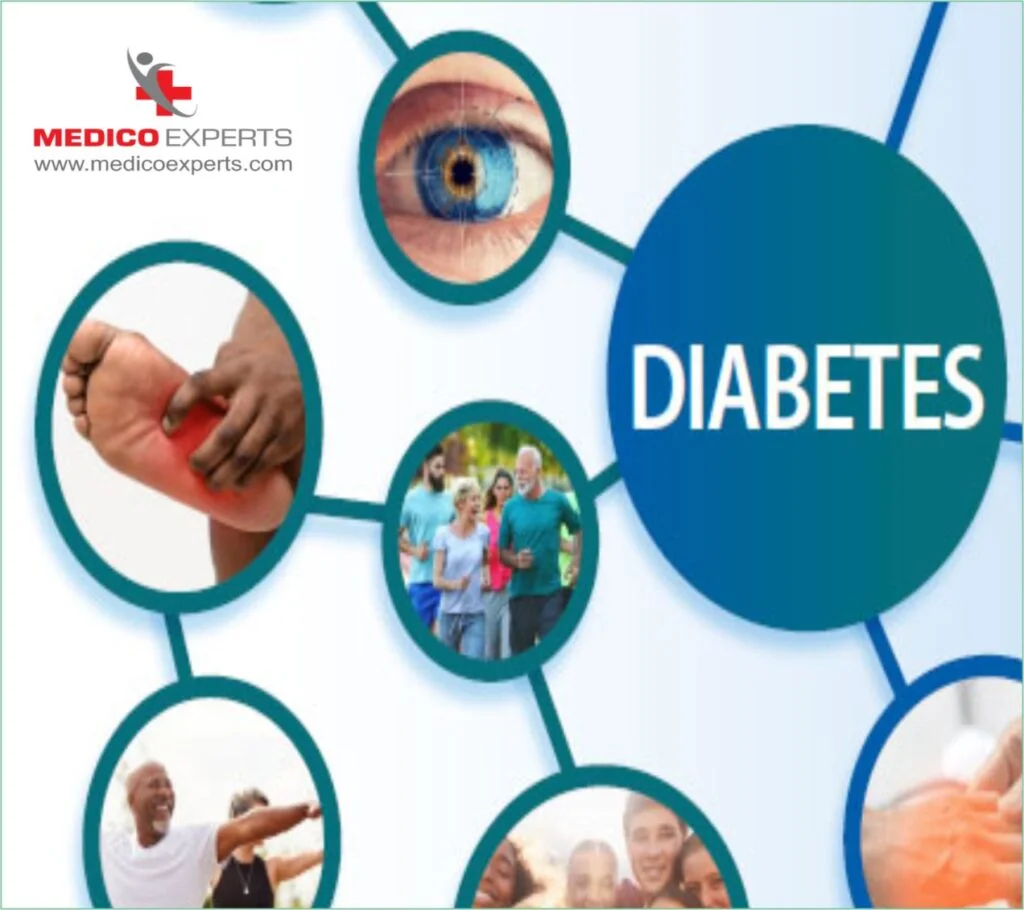
Alternative Treatment Option for Diabetes in India
This involves a variety of ayurvedic treatments which are:

Ayurvedic Treatments for Diabetes
Ayurveda is known for its approach which is identifying the root cause and solving it with herbal medication. It doesn’t focus on immediate suppression of symptoms and hence the results are often slow but long-lasting.
Ayurveda addresses the root cause of the disease. It begins by detoxifying the body so that medicines can work better towards treating the actual root cause of the disease. Along with medication, Ayurveda equally focuses on your diet & lifestyle.
Let’s understand the most advanced and best diabetes treatment in India.
Advanced Treatment Option for Diabetes in India
Diabetes is a chronic illness and can require long-term medical care and patient self-management to prevent and reduce the risk of further complications. Advanced options discussed in this section help to attain better therapeutic outcomes at optimal cost.
What is Stem cell Therapy and how it can be used to treat Diabetes?
Stem cell treatment is considered one of the most effective forms of therapy currently available for diabetes. While offering sustained advantages, it works equally well against type 1 and type 2 diabetes.
Stem cells show immense promise in the treatment of type 2 diabetes. Additionally, they can control their blood sugar levels.
Stem cell therapy is when stem cells are extracted from your body and then processed and multiplied in sophisticated stem cell labs and reinjected in the impacted part of the body. The stem cells regenerate themselves and start converting into specific cells and tissues that the deteriorating body badly needs.
The new cells then begin to replace the damaged and old cells, reversing the condition.
If you have tried everything but nothing works, stem cells are a new ray of hope for you.
Let’s know about the procedure for stem cell therapy.
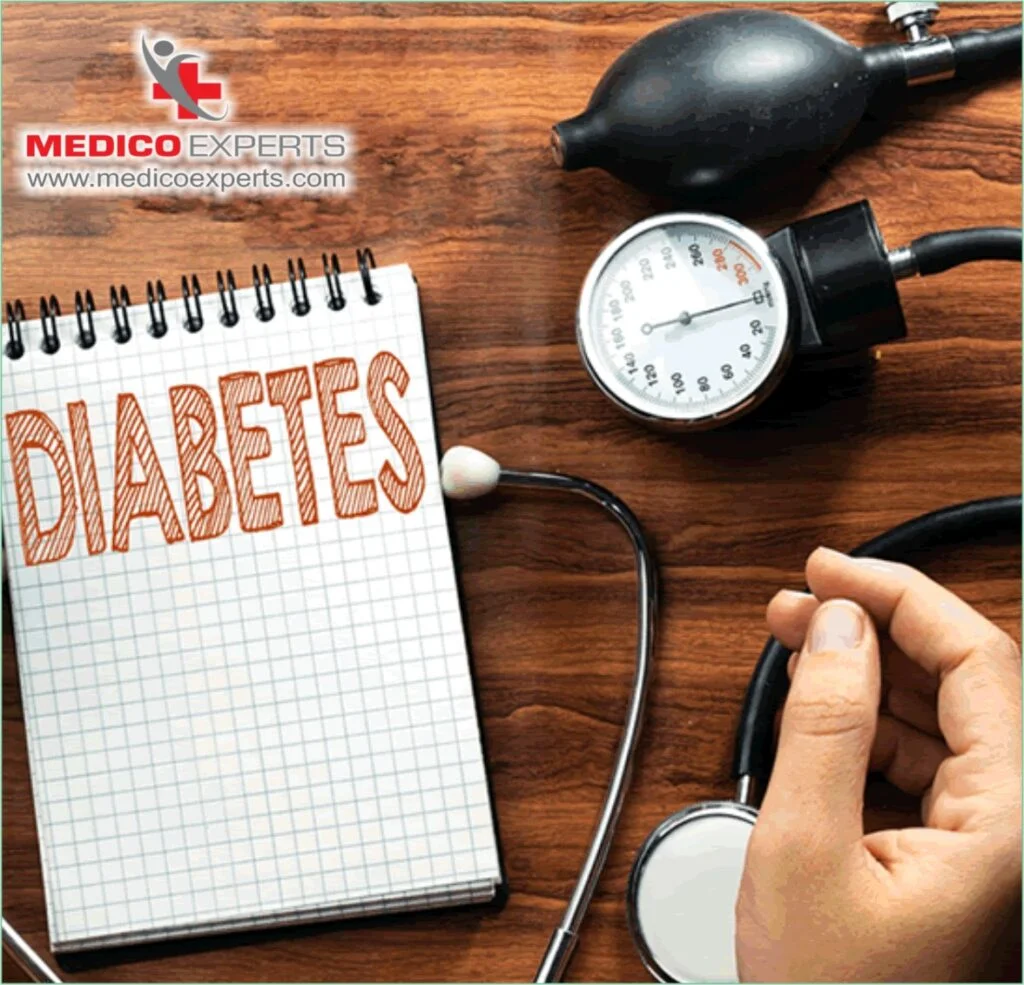

What is the procedure for Stem Cell Therapy for Diabetes?
The procedure of conducting stem cell therapy involves the following steps:
Step 1: Stem Cell Extraction:
To get stem cells from the bone marrow, a regional sedative injection is employed.
Step 2: Laboratory Processing:
What happens next is that the marrow, which has just been extracted, is taken to a Stem Cells processing facility where stem cells are isolated from surrounding tissues and then cultured under laboratory conditions.
Step 3: Injecting Stem cells:
After that, the Stem cells are injected back.
Step 4: Regeneration:
The stem cells reach the organ that needs the repair and start converting themselves into cells of desired functionality. These new cells start the healing process of the organ.
Depending on the severity of the case and other factors such as comorbidities, age, and the patient’s current symptoms, multiple stem cell therapies may be required.
What should be the expected outcomes from Stem Cell Therapy for Diabetes in India?
After a successful Stem cell therapy for diabetes, the following results can be expected:
- Stem cell treatment for diabetes can reverse diabetes. If you can manage the lifestyle after the reversal the probability that diabetes will return back is very low.
- By virtue of that, you can expect to get rid of the symptoms and you are safe from the complications that diabetes can cause such as blindness, heart disease, and kidney failure.


What are the advantages of Stem Cell Therapy for Diabetes?
Stem cell therapy has been proven to be a novel solution for particularly lowering insulin dependency in Type 1 diabetes patients.
It delivers long-term benefits from a single infusion.
This therapy helps to regenerate the insulin-producing cells which in turn produces insulin and improves the symptoms of diabetes.
By providing a one-stop solution for diabetes, stem cell help avoid unwanted medical costs, treatment costs, and diagnostic tests which ultimately also improve the quality of life of the patient and reduce the therapeutic burden.
What are the risks of Stem Cell Therapy for Diabetes?
The only concerning factor with stem cell therapy is that on injecting the stem cells into the body, there is a possibility that your body might experience the presence of these foreign bodies and then make an immune response which would prevent stem cells from acting as anti-diabetic therapy. To improve results physicians use immuno-suppressing agents.
What is the cost of Stem Cell Therapy for Diabetes in India?
The cost of stem cell therapy in India depends on the number of cycles undergone. Per cycle of stem cell therapy can cost $2,000 (2 lac – 2.5 lac), depending on the patient’s current condition, treating doctor, and recommended protocol.
The patient will be required to stay in India for 10 to 30 days, with the possibility of extending the stay to 45 days in some cases.
In comparison to the cost of the same treatment in other countries, diabetes treatment in India is relatively less expensive.
Let’s know how successful stem cell therapy for treating diabetes.

What are the success rates of Stem Cell Treatment for Diabetes in India?
According to the study, 82 percent of patients had a 50 percent reduction in insulin requirements, and 91 percent had an HbA1c of less than 7%. The stem cell therapy success rate makes it the best diabetes treatment in India.

Patient Success Story
Mr. Abhirath Belbase from Nepal was diagnosed with type 1 diabetes when he was 35 years old and could not manage his condition. With a rather stringent regimen, the levels of his blood glucose remained highly unpredictable, and he was always apprehensive about its long-term effects on his health.
After thorough research on the various treatments given, he finally decided to get stem cell therapy treatment in India. He approached MedicoExperts to learn the best hospitals that could help him get relief. Their team of experts is very supportive and knowledgeable, and the treatment went through surprisingly painless.
Following the therapy, his blood sugar levels have stabilized, and he no longer requires insulin injections. He has also noticed significant improvements in his overall health, energy levels, and mental clarity. The team at MedicoExperts has given me a new lease of life. MedicoExperts has given him a second chance at a healthy and fulfilling life.
Take Away
Stem cell therapy for diabetes provides long-term therapeutic benefits by reducing the economic burden of medicines on time and, simultaneously, their therapeutic load, thereby cutting down expenses related to the various tests involved with diabetes.
Needfully, the cost of stem cell therapy for the treatment of diabetes in India is very cheap compared to other Western Countries.
We have enlightened you with all the necessary information that makes an easy path for you to travel to India and get treated for diabetes.
For more details on stem cell therapy for diabetes in India connect with us today!

Frequently Asked Questions (FAQs):
Q1. How can stem cell therapy be used for the treatment of type 2 diabetes?
By using stem cells, doctors create new insulin-producing cells to replace those that are lost by the pancreas. So they use stem cells to treat type 2 diabetes.
Q2. Can stem cell therapy provide a permanent cure for type 2 diabetes?
Though Stem cell therapy cannot completely cure type 2 diabetes, it has the potential to significantly increase the quality of life for patients suffering from it by decreasing symptoms and complications associated with this condition, as well as slowing its progression.
Q3. What foods help lower blood sugar levels?
Following is the list of food items that can be included in your diet to reduce sugar levels.
Vegetables:
- Green peas
- Onions
- Lettuce
- Cabbage
- Leafy greens such as spinach, collards, kale, and beet
- Green beans
- Tomatoes
- Cucumbers
Certain fruits:
- Apples
- Pears
- Plum
- Avocado
- Olives
- Dried apricots
- Unripe banana
- Peaches
- Strawberries
- Oranges
- Cherries
- Coconut
Whole or minimally processed grains:
- Barley
- Whole wheat
- Oat bran and rice bran cereals
- Whole grain pasta
- Whole-grain pumpernickel bread
- Sourdough bread
- Wheat tortilla
- Nuts and nut butter
- Mushrooms
- Seeds such as pumpkin, chia, sunflower, and flaxseeds
Dairy and dairy-substitute products:
- Plain yoghurt
- Cheese
- Cottage cheese
- Milk
- Soy milk and yoghurt
Q4. Which is the best hospital for stem cell therapy for diabetes in India?
Some Indian hospitals have stem cell therapy to treat diabetes. To choose the best hospital, you need to consider factors like treatment methods for diabetes, the doctor’s expertise, and the success rate of the treatment.
We can help you connect with the top-notch hospitals that have excellent track records for stem cell therapy for diabetes.
Click on the “WhatsApp Me” button for more information.

MedicoExperts is a Global virtual hospital which is established to offer quality healthcare services at affordable pricing without compromising the success rates of the treatment.
MedicoExperts is having a network of highly experienced super specialist doctors and well equipped hospitals across the globe and offering second opinion through online video consultation and surgical interventions through its empanelled super specialist doctors at its network hospitals in 17 countries from 3 continents.
By the virtue of its approach and model, MedicoExperts is successfully achieve to deliver
- Latest and most advanced treatments with success rates of international benchmarks.
- Multiple cost options depending upon the hospital facilities, with the same doctor.
- Treatment option in multiple cities/state/countries.
- Trust and peace of mind.
Most suitable for patients who are looking for:-
- Planned Surgeries and treatment from most experienced doctors and at multiple cost options as per hospital facilities with best possible outcomes.
- Second Opinion from expert doctors.
- Complex cases involving multi specialities
- International patients looking for treatment from Indian doctors
Recommended Articles For You
- https://clinmedjournals.org/articles/ijscrt/international-journal-of-stem-cell-research-and-therapy-ijscrt-5-053.php?jid=ijscrt
- https://www.ncbi.nlm.nih.gov/pmc/articles/PMC3603032/
- https://www.ncbi.nlm.nih.gov/pmc/articles/PMC10370506/
- https://stemcellres.biomedcentral.com/articles/10.1186/s13287-024-03636-0
- https://www.stemcellcareindia.com/diseases/diabetes-stem-cell-treatment-india/
- https://trustemcell.com/type-2-diabetes-stem-cell-therapy/
- https://www.who.int/health-topics/diabetes#tab=tab_1
Recommendations To Understand Different Treatments
Stem Cell Therapy In India
You dream and hope to see your loved ones living a happy and healthy life. But when that health and happiness can come from a new treatment and travelling to a new country, your mind may…..Read More
Stem Cell Therapy For Diabetes
Today we are going to know the difference between conventional treatment and stem cell therapy for diabetes. Did you know about 422 million people worldwide have diabetes and people are…..Read More
Cell-Based Therapy For Diabetes Treatment
Would you like to seek a best treatment of diabetes that does not require strict discipline on your lifestyle? If your answer is yes we have something that might interest you. We understand that popping medicine or…..Read More
Medically Reviewed By MedicoExperts Editorial & Clinically Review Board On 1 July 2024

Author Bio:
Dr. Khushbu Jain is a dedicated professional with a passion for advancing healthcare through cutting-edge treatments. She has a special interest in researching regenerative medicine and advanced treatment for diseases that are difficult to treat with conventional treatment options. Her deep understanding of these progressive treatments allows her to offer patients personalized and effective solutions for a variety of health concerns.




